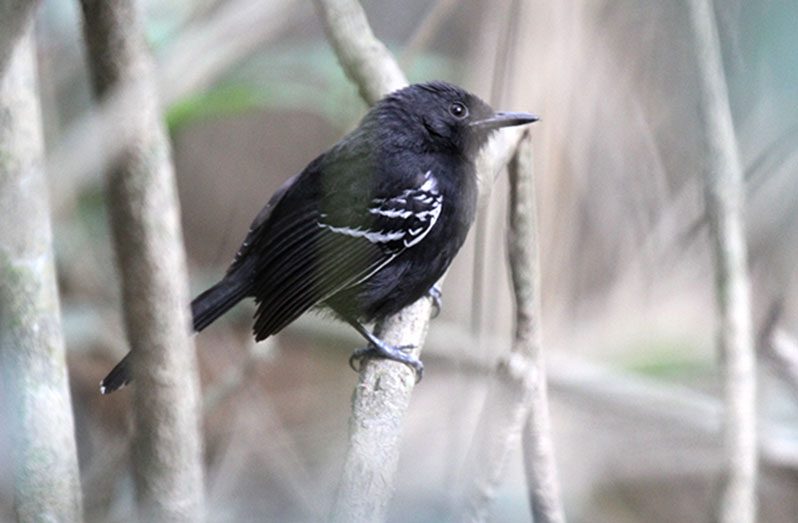– SRCS has a conservation action plan!
THROUGH its latest project, the South Rupununi Conservation Society (SRCS) is fighting to save two critically endangered species of birds – the Hoary-throated Spinetail (Synallaxis Kollari) and the Rio Branco Antbird (Cercomacra Carbonaria) – that can be found nowhere else in the world except on a tiny section of the Guyana-Brazil border.
While a population estimate has been done on the Brazil side, it has never been done in Guyana and it has been found that people in the Rupununi, and even those who are into tourism, have never heard of these birds.

Learning of the threats to the birds and worried that a possible extinction is imminent if immediate conservation actions are not taken, the SRCS decided to conduct a population estimate for both species and only just completed a month-long expedition along the Ireng and Takutu Rivers where both species are endemic to a small stretch of gallery forest.
The SRCS has found that even as other species such as the Red Siskin, Sun Parakeet and the Great-Billed Seed-Finch are considered endangered, what is happening with the two species in question is even more serious.

With funding from Conservation International Guyana and ReWild, SRCS conducted the intense river expedition from mid-July to the third week of August, led by Jeremy Melville, scientific advisor from the USA Dr. Brian O’Shea and eight SRCS rangers (Angelbert Johnny and Frank Johnny from Sawariwau Village; Asaph Wilson, Nathaneel Wilson and Samuel Cyril from Katoonarib Village; Flavian Thomas from Rupunau Village; Dereck David from Sand Creek Village; and Abraham Ignace from Shulinab Village).
Travelling up and down the rivers, the team implemented a scientific methodology to estimate the population of both species and assessed the threats, finding a lot of habitat destruction for the homes of both species that has occurred mainly due to fire and agricultural development.

Having completed the expedition, the team will now analyse the results to produce a final population estimate and for the next step of the project, will plan to do a second expedition to conduct a population assessment – but this time in the dry season (January to March) as the conditions for the birds will be different at this time and their numbers may differ.
The team then plans to work with local Indigenous communities and nearby private landowners such as Waikin Ranch and Manari Ranch to develop a conservation action plan to help protect the birds and to hopefully stabilise the population.

Possibilities of conservation action include monitoring the species, habitat restoration, and creating a community conservation area. SRCS also hopes to work with stakeholders on the Brazil side of the border as the birds will still be at risk if a collaborative effort does not occur.
“These two birds are extremely important for the Rupununi. Not only are they both important for the local ecosystem and wildlife diversity, but they also have massive potential for the local tourism industry in the Rupununi,” SRCS Programme Coordinator Neal Miller told Pepperpot Magazine on Friday.
“Until now, the main attractions of the Rupununi have been the Red Siskin, Sun Parakeet, Toco Toucans, Jabiru Storks and many others but these two birds, as they can only be found here on the border of Guyana and Brazil, and nowhere else in the world, are a major unique attraction. They can be promoted to increase the Rupununi’s growing tourism market. And this comes at a time when the Rupununi is looking to bounce back with tourism after the devastation of the COVID-19 pandemic,” Miller continued.
The projects by SRCS, a conservation Non-Governmental Organisation (NGO) in Guyana, are focused on preserving the environment and wildlife of Region Nine (Upper Takutu/Upper Essequibo) through research, community-based conservation management and environmental education.
It is currently implementing projects to conserve the Red Siskin, Giant Anteater (Myrmecophaga Tridactyla) and the Yellow-spotted River Turtle (Podocnemis Unifilis) in the South Rupununi and is facilitating an environmental education curriculum, monitoring the impact of fire on wildlife and organising traditional Knowledge classes to help preserve the culture of the Indigenous peoples of the Rupununi.








.png)







